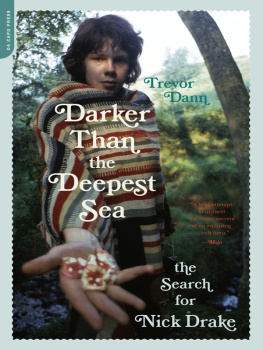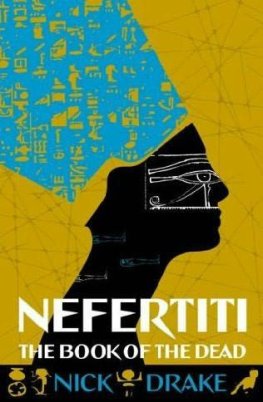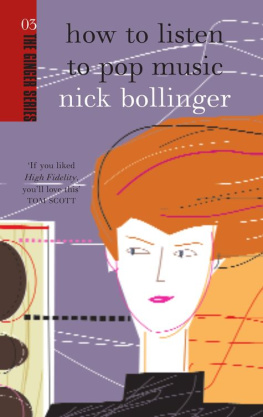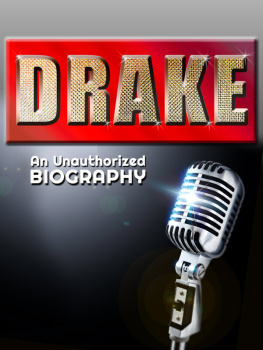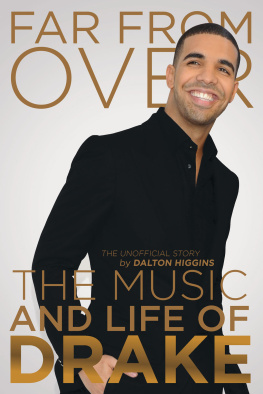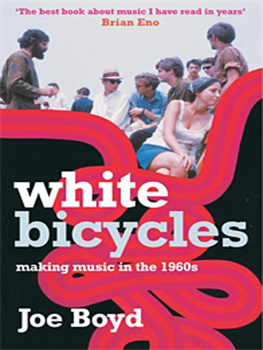All rights reserved. No part of this publication may be reproduced, stored in a retrieval system, or transmitted, in any form or by any means, electronic, mechanical, photocopying, recording, or otherwise, without the prior written permission of the publisher. Printed in the United States of America.
Cataloging-in-Publication data for this book is available from the Library of Congress.
Da Capo Press books are available at special discounts for bulk purchases in the U.S. by corporations, institutions, and other organizations. For more information, please contact the Special Markets Department at the Perseus Books Group, 11 Cambridge Center, Cambridge, MA 02142, or call (800) 255-1514 or (617) 252-5298, or e-mail .
Introduction
NICK DRAKE wrote his own epitaph: no one knows the fruit tree, he sang, except the rain and air, but everyone will stand and stare when its gone. Before he was 21 this handsome, privileged, gifted, English songwriter and guitarist had predicted that he would be unrecognised during his short life, but lauded long after he ended it, broke, alone, ignored, and ravaged by drugs.
The history of pop and rock music in the second half of the 20th century is littered with the corpses of musicians who couldnt cope either with fame or without it. Because he died by his own hand aged only 26, Nick Drake is usually filed alongside Kurt Cobain, Ian Curtis, Jim Morrison, Gram Parsons, Jeff Buckley, Tim Buckley and all the other promising-young-life-cut-short tragedies. But Nicks story is not the classic rock n roll suicide or gonzo gross-out.
There has been no shortage of theories. And the evidence from people who knew him is often contradictory. He was an arrogant, spoiled, toffee-nosed, upper-class Hooray Henry who felt the world owed him a living and couldnt handle failure. Or he was a sensitive, over-protected child who bravely broke away from his claustrophobic upper-class background, but never found the mental strength to deal with the pressures of the music business. He was charming company. He was withdrawn and aloof. He was gay. He had a series of passionate relationships with women. He couldnt face any sexual contact. His music is dreary, immature and self-pitying. He was one of the greatest guitarists who ever lived and his lyrics bear comparison with the works of Tennyson and Blake. He became mentally ill. He was a heroin user. He killed himself. He didnt kill himself. To borrow Winston Churchills phrase, his life was a riddle wrapped in a mystery inside an enigma.
Yet the debate about his music and his heritage rages with more intensity now than ever. When I embarked on this book in autumn 2004, a Google search revealed about 550,000 references to Nick Drake. Today there are over a million, far more than for Jeff Buckley (765,000) or Janis Joplin (625,000).
There are six extravagantly detailed websites, including one in Italian, and several message boards. In the past few years there have been two TV documentaries, a BBC radio profile narrated by Brad Pitt, two new compilation CDs and even a promo video. He sold more records in 2004 than in any other year since his first album was released in 1969.
Its a measure of the growing appeal of Nicks music that even Hollywood has begun to embrace him. When a scene demands an atmospheric and introspective soundtrack, the call goes out for a Nick Drake song. Things Behind The Sun and One Of These Things First were used in Garden State (2004), Black Eyed Dog and Cello Song in The Good Girl (2002), Northern Sky in Serendipity (2001), Fly in The Royal Tenenbaums (1999) and Road in Hideous Kinky (1998). The popular US television series Young Americans has also employed many of Nicks songs. Its the same in the compilation album business. In the first 15 years after his death Nicks music appeared on just one commercially available collection. In the subsequent 15 no less than 30 CDs have featured his songs. There is a growing number of cover versions too many of the best of which, interestingly, have been by women vocalists, including Lucinda Williams (Which Will), Norma Waterson (River Man), Christine Collister (Black Eyed Dog) and Norah Jones (Day Is Done). And in the UK, theres a fully fledged Nick Drake tribute act working the folk clubs and arts centres. Keith James, a guitarist and singer in his 50s, started his Songs Of Nick Drake evenings to supplement his performances of his own songs. Now the Drake thing has almost taken over, he told me, I could work every night of the year singing Nicks songs if I wanted to.
There are even songs about Nick. The brilliant oddball singer-songwriter Robyn Hitchcock like Nick, a former student at Cambridge University recorded I Saw Nick Drake in 2002. Written on a barge as it slid silently down the Thames near Windsor, the song is a moving evocation of Nicks spirit with its arresting opening line, I saw Nick Drake on the corner of time and motion. At an event held in Tanworth church to commemorate the 30th anniversary of Nicks death, the legendary Ashley Hutchings, who gave the young musician his big break in 1967, unveiled his new song about Nick called Given Time. He explained that he began to write it soon after the radio and TV documentaries were aired in 2004. He couldnt sleep, thinking about the tragedy of Nicks short life and the part he had played himself in launching Nicks illstarred career. Impossibly tall, incredibly still, sang the now 60-year-old godfather of English folk music, he drew me closer against my will. His musical partner Mark Hutchinson sang the closing lines about how some stars in the heavens will be brighter later.
So what sets Nick Drake apart from the other pale, fey, introspective, angst-ridden shoe-gazers who have been thrown up by every generation and every musical movement in the UK?
The three albums released in his lifetime, a legacy of just 31 tracks, sound as fresh today as they did in the studio nearly 40 years ago a great tribute to the work of Joe Boyd, their producer, and John Wood, the engineer at Sound Techniques in London. Whether augmented by a lavish string arrangement or a pumping rock band, or left alone with his guitar, Nick was able to create a unique and instantly recognisable sound warm, crisp, immediate and utterly authentic the perfect environment for his engaging, deceptively simple compositions.
Nick Drake was a sophisticated musician who could read and write music and knew the piano, the clarinet and the sax as well as he knew the guitar. He wasnt a folkie: he could play the folk club standards as well as anyone, but he didnt relate to the finger-picking acoustic tradition. Neither was he a typical teenage guitarist: he was interested in the fashionable experimentation of 1960s pop, but he didnt draw on the three-chord rock n roll tradition either. His influences were avant-garde jazz, classical music, especially choral works, what wed now call world music, and the blues. He played his acoustic guitar and used his narrow vocal range as though they were jazz instruments, weaving in and out of musical conventions, always experimenting with phrasing, tuning and time signatures to give his songs an unsettling, other-worldly feel. His vocals rarely start where we expect them. The emphasis in his lyrics rarely falls where rock or folk tradition would demand. He mixes major and minor chords with ease. He understands the modal compositional ideas of Miles Davis and avoids standard verse/chorus structures. Tony Reif, who produced the remarkable

